Difference between revisions of "Thickness of leather"
| Line 16: | Line 16: | ||
<p> </p> | <p> </p> | ||
| − | The usual thickness for [[car leather|car]] or [[leather furniture|furniture leather]] is 0.9 to 1.2 millimeters. Thicker leather than 1.4 millimeters is called [[thick leather]]. [[leather clothing|Garment leather]] of light leisure jackets has a thickness of 0.5 to 0.9 millimeters. Depending on the [[type of leather]], the leather thickness varies. | + | The usual thickness for [[car leather|car]] or [[leather furniture|furniture leather]] is 0.9 to 1.2 millimeters. Thicker leather than 1.4 millimeters is called [[thick leather]]. [[leather clothing|Garment leather]] of light leisure jackets has a thickness of 0.5 to 0.9 millimeters. Depending on the [[Types of leather|type of leather]], the leather thickness varies. |
Since [[leather]] is a soft material, it is difficult to measure the thickness simply with a caliper. The soft material would be pressed thinner and the results would be different depending on presssure. In the case of standardized leather thickness measuring devices, the thickness of the leather is determined with a predefined area and a predetermined contact pressure. Since leather is inhomogeneous, it is nearly not possible to measure uniform results over the entire [[Parts of the hide|surface of a skin]]. The measurement of the thickness of leather is regulated in national and international standards. | Since [[leather]] is a soft material, it is difficult to measure the thickness simply with a caliper. The soft material would be pressed thinner and the results would be different depending on presssure. In the case of standardized leather thickness measuring devices, the thickness of the leather is determined with a predefined area and a predetermined contact pressure. Since leather is inhomogeneous, it is nearly not possible to measure uniform results over the entire [[Parts of the hide|surface of a skin]]. The measurement of the thickness of leather is regulated in national and international standards. | ||
Revision as of 12:24, 15 January 2017
For example, pig leather or lamb leather is much thinner than cow leather. Rindsleder is even so thick that it is usually split down to a usable measure. An unsplit cattle skin has a thickness of about 45 millimeters. A leather in such a thickness can hardly be stiched. Therefore such thick leather does not appear in the car sector at all and in the furniture sector very rarely.
In order to achieve the desired leather thickness, leather is first split and then shaved.
Cow leather is usually split into at least two layers.
The usual thickness for car or furniture leather is 0.9 to 1.2 millimeters. Thicker leather than 1.4 millimeters is called thick leather. Garment leather of light leisure jackets has a thickness of 0.5 to 0.9 millimeters. Depending on the type of leather, the leather thickness varies.
Since leather is a soft material, it is difficult to measure the thickness simply with a caliper. The soft material would be pressed thinner and the results would be different depending on presssure. In the case of standardized leather thickness measuring devices, the thickness of the leather is determined with a predefined area and a predetermined contact pressure. Since leather is inhomogeneous, it is nearly not possible to measure uniform results over the entire surface of a skin. The measurement of the thickness of leather is regulated in national and international standards.
Special measuring device for the determination of the leather thickness.
The scale of the measuring device in the magnification. The measured leather is 1.7 millimeters thick.
Beim Falzen in der Gerberei wird die Lederstärke immer wieder nachgemessen.
Bei pflanzlich gegerbten Ledern werden je nach Lederstärke folgende Lederartikel produziert:
1,0 - 2,5 mm: Brietaschen, Wandertaschen, Buchhüllen, Schreibmappen
2,0 - 2,5 mm: Taschen, Außenseiten der Geldbörsen
2,8 - 3,5 mm: Messerscheiden, Kofferanhänger, Papierkörbe, Würfelbecher, Untersetzer, Gürtel, Schuhsohlen
Heavy Duty Belt - USA-Gürtel mit 6,3 mm Lederstärke - dünnes, butterweiches Lammleder
Film über Spaltleder und folienbeschichtete Spaltleder
Filme über die Herstellung von folienbeschichteten Spaltledern.
Additional information
- Splitting
- Shaving
- Measures and weights
- Leather quality
- Thick leather
- Importance of the thickness of leather in furniture upholstery







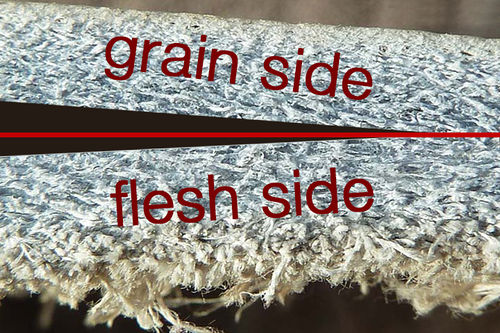
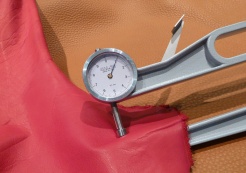
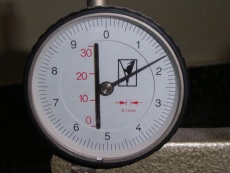
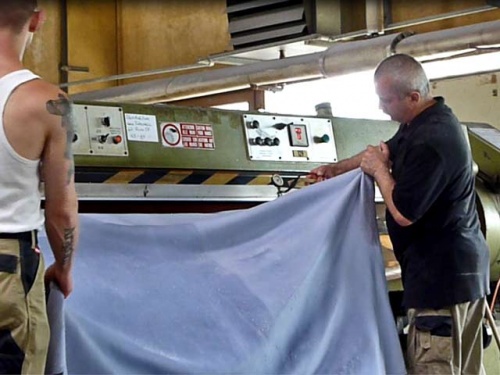
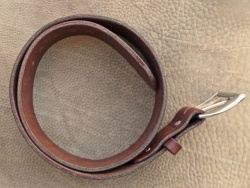
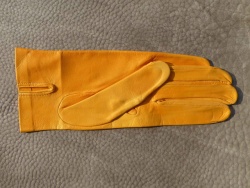

 a kotori web solution
a kotori web solution